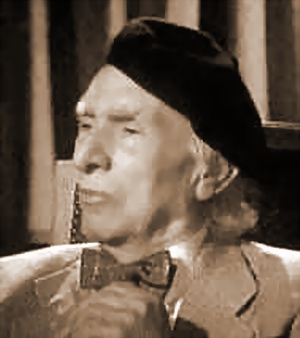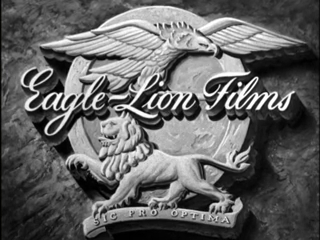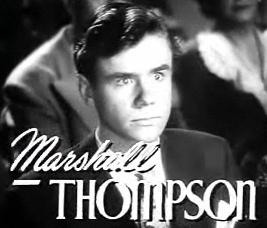Related Research Articles

William Washington Beaudine was an American film director. He was one of Hollywood's most prolific directors, turning out films in remarkable numbers and in a wide variety of genres.

John Alton, born Johann Jacob Altmann, in Sopron, Kingdom of Hungary, was an American cinematographer of Hungarian-German origin. Alton photographed some of the most famous films noir of the classic period and won an Academy Award for the cinematography of An American in Paris (1951), becoming the first Hungarian-born person to do so in the cinematography category.

Cinecolor was an early subtractive color-model two-color motion picture process that was based upon the Prizma system of the 1910s and 1920s and the Multicolor system of the late 1920s and the 1930s. It was developed by William T. Crispinel and Alan M. Gundelfinger, and its various formats were in use from 1932 to 1955.

Producers Releasing Corporation was the smallest and least prestigious of the Hollywood film studios of the 1940s. It was considered a prime example of what was called "Poverty Row": a low-rent stretch of Gower Street in Hollywood where shoestring film producers based their operations. However, PRC was more substantial than the usual independent companies that made only a few low-budget movies and then disappeared. PRC was an actual Hollywood studio – albeit the smallest – with its own production facilities and distribution network, and it even accepted imports from the UK. PRC lasted from 1939 to 1947, churning out low-budget B movies for the lower half of a double bill or the upper half of a neighborhood theater showing second-run films. The studio was originally located at 1440 N. Gower St. from 1936 to 1943. PRC then occupied the former Grand National Pictures physical plant at 7324 Santa Monica Blvd., from 1943 to 1946. This address is now an apartment complex.
The Pacific Coast Hockey League was an ice hockey minor league with teams in the western United States and western Canada that existed in three incarnations: from 1928 to 1931, from 1936 to 1941, and from 1944 to 1952.

Joseph LaShelle ASC was an American film cinematographer.

Eagle-Lion Films was the name of two distinct, though related, companies. In 1944, UK film magnate J. Arthur Rank created an American distribution company with the name to handle his British films. The following year, under a reciprocal distribution arrangement with Rank, the U.S. company Pathé Industries, which already owned the small Producers Releasing Corporation (PRC) studio, established an Eagle-Lion Films production subsidiary, while Rank's American business dropped the name. PRC, with its existing distribution exchanges, handled releases in the U.S. When PRC shut down in 1948, its distribution exchanges were assumed by Eagle-Lion Films. In 1950, Pathé merged Eagle-Lion with an independent reissues distributor, Film Classics, to create Eagle-Lion Classics. The latter was acquired by and merged into United Artists a year later. Rank also released films in the United Kingdom through Eagle-Lion Distributors Limited.

Louis Creekmur was an American professional football player who was an offensive lineman for 10 years (1950–1959) with the Detroit Lions of the National Football League (NFL). He was inducted into the Pro Football Hall of Fame in 1996.
Aubrey Schenck was an American film producer from the 1940s through the 1970s.

Selznick International Pictures was a Hollywood motion picture studio created by David O. Selznick in 1935, and dissolved in 1943. In its short existence the independent studio produced two films that received the Academy Award for Best Picture—Gone with the Wind (1939) and Rebecca (1940)—and three that were nominated, A Star Is Born (1937), Since You Went Away (1944) and Spellbound (1945).

Steven Geray was a Hungarian-born American film actor who appeared in over 100 films and dozens of television programs. Geray appeared in numerous famed A-pictures, including Alfred Hitchcock's Spellbound (1945) and To Catch a Thief (1955), Joseph L. Mankiewicz's All About Eve (1950), and Howard Hawks' Gentlemen Prefer Blondes (1953). However, it was in film noir that be became a fixture, being cast in over a dozen pictures in the genre. Among them were The Mask of Dimitrios (1944), Gilda (1946), The Unfaithful (1947), In a Lonely Place (1950), and The House on Telegraph Hill (1951).

James Marshall Thompson was an American film and television actor.

James Shorttel Bannon was an American actor and radio announcer known for his work on the I Love a Mystery and Red Ryder series during the 1940s and 1950s.

Michael O'Shea was known as an American actor who appeared in feature films and later in television and whose career spanned the 1940s, 1950s, and 1960s.

Robert Lenard Lippert was an American film producer and cinema chain owner. He was president and chief operating officer of Lippert Theatres, Affiliated Theatres and Transcontinental Theatres, all based in San Francisco, and at his height, he owned a chain of 139 movie theaters.

Pathé Exchange, commonly known as Pathé, was an American film production and distribution company, largely of Hollywood's silent era. Known for its groundbreaking newsreel and wide array of shorts, it grew out of the American division of the major French studio Pathé Frères, which began distributing films in the United States in 1904. Ten years later, it produced the enormously successful The Perils of Pauline, a twenty-episode serial that came to define the genre. The American operation was incorporated as Pathé Exchange toward the end of 1914 and spun off as an independent entity in 1921; the Merrill Lynch investment firm acquired a controlling stake. The following year, it released Robert J. Flaherty's groundbreaking documentary Nanook of the North. Other notable feature releases included the controversial drama Sex (1920) and director/producer Cecil B. DeMille's smash-hit biblical epic The King of Kings (1927). During much of the 1920s, Pathé distributed the shorts of comedy pioneers Hal Roach and Mack Sennett and innovative animator Paul Terry. For Roach and then his own production company, acclaimed comedian Harold Lloyd starred in many feature and short releases from Pathé and the closely linked Associated Exhibitors.
Joseph Patrick MacDonald, A.S.C. was a Mexico-born American cinematographer. An assistant cameraman from the early 1920s, he became a cinematographer in the 1940s and soon was working on Hollywood productions, mostly at 20th Century Fox. He was usually billed as Joe MacDonald. He was the first Mexico-born cinematographer, and only the second overall, after Leon Shamroy, to film a movie in CinemaScope, as well as the first Mexico-born cinematographer to film a movie in Deluxe Color.
Irvin Shapiro was an American producer, film importer, and film distributor who was responsible for introducing a number of influential foreign films to the United States, as well as handling the early work of some noted directors.
Sigmund Neufeld was an American B movie producer. He spent many years at Poverty Row studio Producers Releasing Corporation where he mainly produced films directed by his brother Sam Newfield. When PRC was taken over by Eagle-Lion Films in 1947 they both left the company. Eagle-Lion had goals of making bigger, more ambitious movies, a change in strategy that Sigmund deemed to be a financial mistake. During the following years he and his brother made several films for Film Classics. When this company also merged with Eagle-Lion in 1950 they both moved to Lippert Pictures.
Joseph Simon Dubin was an American composer and orchestrator, scoring and orchestrating more than 200 motion pictures during his career. His brother, Al Dubin was an American songwriter, lyricist, soldier and actor. Joseph Dubin is best known for composing the soundtrack for the 1930 MGM film The Big House, as well as the Walt Disney films Cinderella, Alice in Wonderland, 20,000 Leagues Under the Sea, The Adventures of Ichabod and Mr. Toad. Dubin also orchestrated and scored many television series, including Zorro and The Mickey Mouse Club.
References
- ↑ Anthony Slide, The New Historical Dictionary of the American Film Industry. Routledge, 2014, p. 72.
- ↑ Scott MacGillivray, Laurel & Hardy: From the Forties Forward. Second edition: New York: iUniverse, 2009, p. 174-175. ISBN 978-1440172397.
- ↑ Motion Picture Herald, "Cinecolor Takes Film Classics," Oct. 18, 1947, p. 20.
- ↑ Boxoffice, "Color Films to 70% Soon, Joseph Bernhard Predicts," April 24, 1948, p.20.